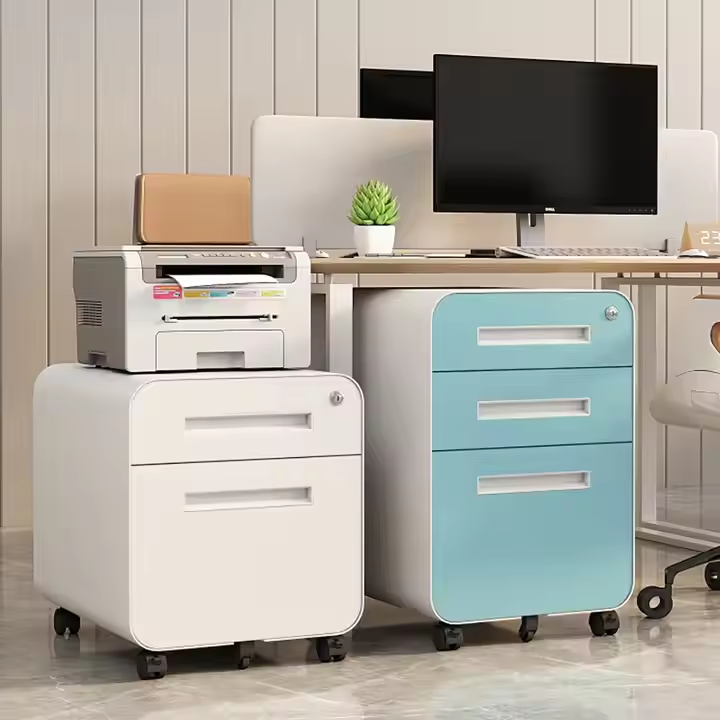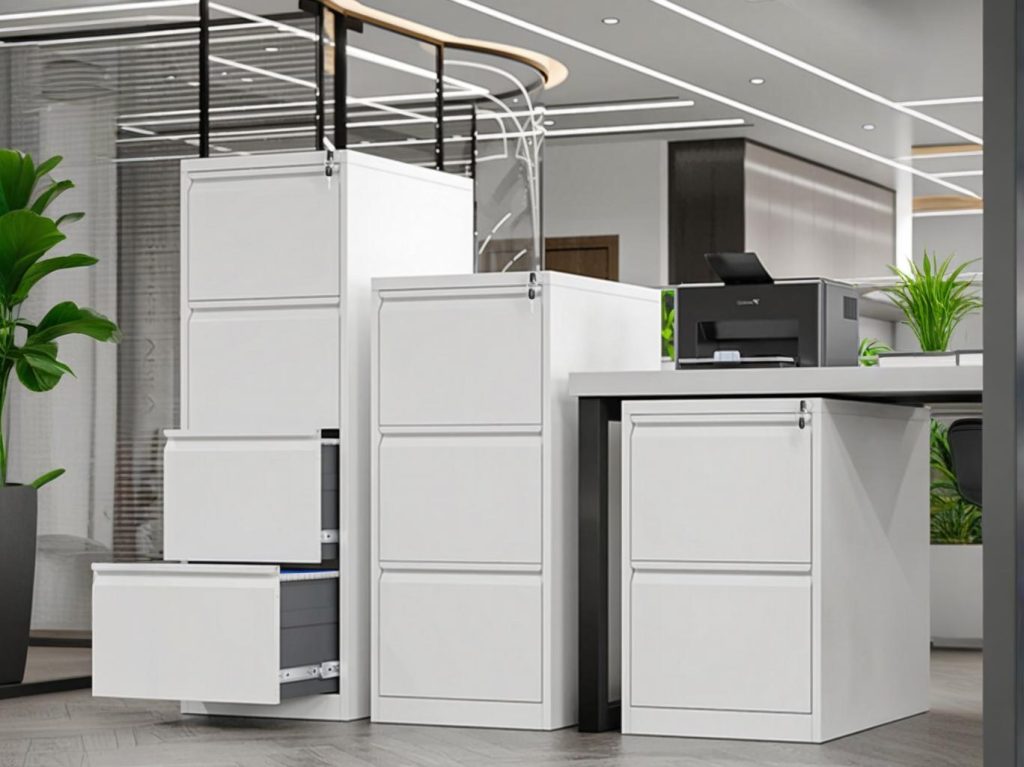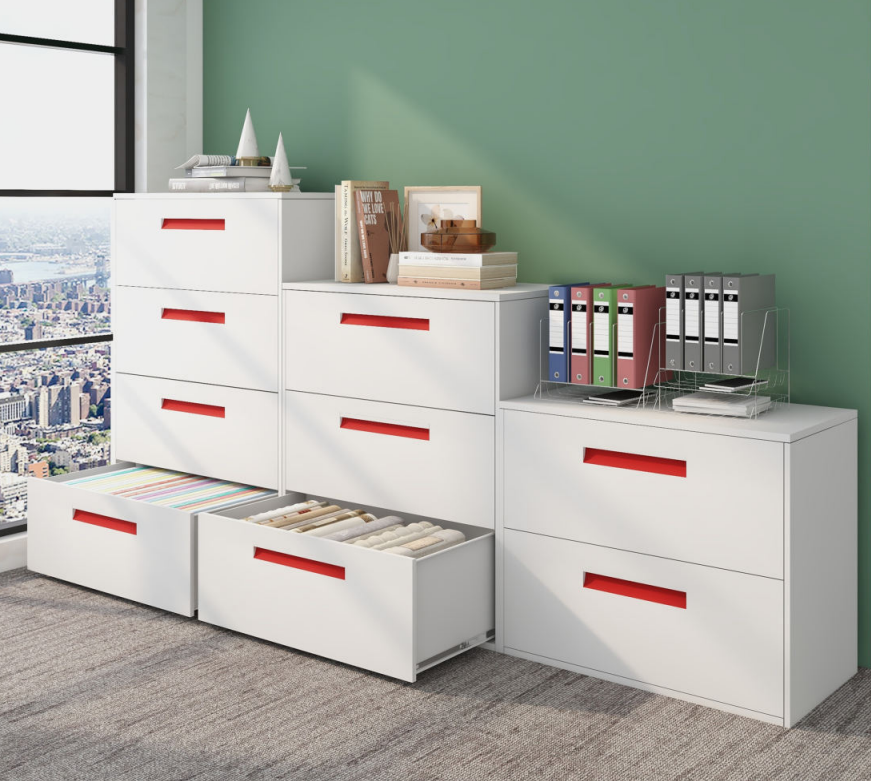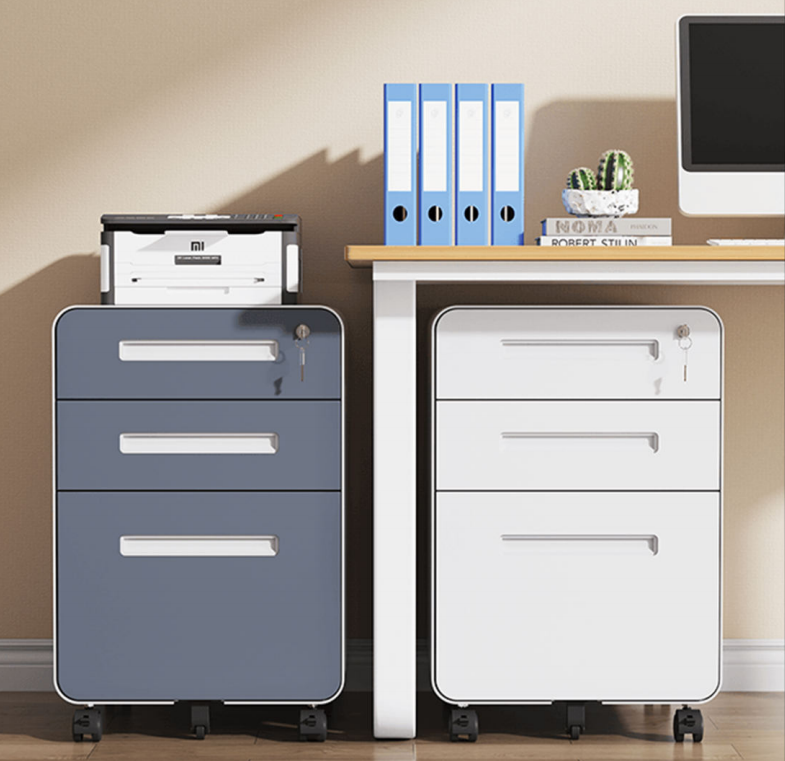
Imagine walking into your office and seeing a neat desk with a file cabinet nearby. Feels nice, right? It’s not just about looks—it helps you work better. Studies say clutter makes you stressed and unhappy at work. This can hurt how well you do your job. A drawer file cabinet can change your workspace. Whether it’s a 2 drawer file cabinet, a 3 drawer file cabinet, or even a 4 drawer file cabinet, it keeps things tidy. If you prefer mobility, a mobile file cabinet is also a great option. This organization helps you focus on important tasks. You’ll work quicker, feel calmer, and enjoy your day more.
Key Takeaways
- A clean office helps you work better. Use a file cabinet to keep things neat and lower stress, so you can focus on your work.
- Pick a file cabinet that fits your space and needs. Think about its size, style, and features like locks or fire safety.
- Make a good filing system by sorting papers, adding clear labels, and using colors. This helps you save time and find things quickly.
Choosing the Right File Cabinet
Size and Capacity Considerations
Think about your office space before picking a file cabinet. How much room do you have? How many papers need storing? For small offices, a compact cabinet saves space and keeps things neat. If you handle lots of paperwork, choose a bigger cabinet with more drawers. It’s not just about storage—it’s about finding things fast when needed.
Years ago, desks piled with papers showed "information overload." This made working harder. Some 1980s studies said organized piles worked well. But a good file cabinet is cleaner and looks more professional.
Types of File Cabinets (Vertical, Lateral, Mobile)
File cabinets come in different types, each with benefits:
- Vertical File Cabinets: Best for tight spaces. They’re sturdy and easy to sort. You can organize files by category.
- Lateral File Cabinets: Great for big offices. These have wide drawers to hold more files side by side.
- Mobile File Cabinets: Need to move files around? Mobile cabinets roll easily. They’re small and hold papers and supplies.
Pick a type based on your office setup and work style.



Essential Features to Look For (Locks, Fireproofing, Aesthetics)
Don’t forget important features when choosing a cabinet. Locks keep private papers safe. Fireproof cabinets protect files from fires. And style matters too—your cabinet should match your office look, especially if clients visit.
Here’s why these features are important:
| Feature | Why It Matters |
|---|---|
| Locks | Protects private papers. |
| Fireproofing | Keeps files safe from fire. |
| Aesthetics | Makes your office look professional. |
A good file cabinet isn’t just useful—it shows you’re organized and professional.
Setting Up an Efficient Filing System
A good filing system isn’t just for storing papers. It helps make work easier and faster. When your files are neat, you spend less time searching. This gives you more time to focus on important tasks. Let’s learn how to create a system that works for you.
Categorizing Documents Effectively
First, sort your papers into clear groups. Think about how you use them daily. Are they for clients, projects, or money matters? Put similar files together in sections. For example, you can have folders like "Invoices," "Contracts," or "Meeting Notes."
Tip: Look through your papers first to understand them. Then, decide on categories based on their content.
This method saves time and reduces stress. Studies show 48% of workers can’t find files quickly. Over 10% spend four hours a week searching for documents. Imagine how much time you’ll save with an organized system!
Here’s a simple table to help you organize:
| Best Practice | Description |
|---|---|
| Specific Tracker | Use software or a list to track file groups. |
| Reliable Sources | Make sure your files come from trusted places. |
| Date Ranges | Sort files by date for easy finding during reviews. |
| Clear Communication | Label folders clearly to avoid mix-ups when sharing or finding files. |
Labeling and Alphabetizing for Quick Access
Labels make finding files super easy. Use names that are clear and helpful. For example, instead of "Miscellaneous," try "Client Feedback - Q3." Alphabetizing folders also helps, especially if you have many files.
Pro Tip: Use simple file names with regular characters to avoid search errors.
Studies show alphabetical order makes finding files smoother. It’s like having a map for your cabinet—everything is where it should be.
Using Color-Coding and Hanging Files
Color coding is a great way to organize your cabinet. Use colors for different file types. For example, green for money papers, blue for client files, and red for urgent tasks. This makes it easy to find what you need quickly.
Hanging files are also helpful. They keep papers straight and stop them from getting messy. Use color-coded labels with them for the best results.
Did you know? Over 95% of workers feel annoyed when they can’t find files. Color coding can reduce this stress and make work easier.
Here’s why color coding is helpful:
- It helps you tell file types apart fast.
- It makes filing and finding quicker.
- It keeps your workspace neat and nice to look at.
By using these tips, your file cabinet will become super organized and efficient.
Maximizing Space and Accessibility with File Cabinets
Decluttering Before Filing
Before filing, take time to clear out old papers. Go through everything and decide what to keep or toss. Think of it like cleaning a messy room before decorating. Studies show that decluttering helps you stay organized and feel less stressed. For example, research on hoarding found that clearing clutter improved people’s lives.
Quick Tip: Make three piles—“Keep,” “Shred,” and “Recycle.” This simple method makes sorting faster. Once you’re done, you’ll have a clean space to start organizing.
Using Wall-Mounted or Stackable File Cabinets
If your office is small, try wall-mounted or stackable cabinets. These save space by using walls or stacking upwards. For example, museums use creative storage to fit large collections. The Michael C. Carlos Museum used smart storage to save space and improve access.
Wall-mounted cabinets are great for files you use often. Stackable ones let you add more storage without taking up extra floor space.
Organizing Drawers for Easy Retrieval
Organized drawers make finding things quick and easy. Start by creating a system that works for you. Use labels and short, clear names for your files. Keeping a list of your files can also help you know where everything is.
Here’s a simple table of drawer tips:
| Strategy | Description |
|---|---|
| Create a filing system | Set up a way to organize and store your papers. |
| Make a list of files | Write down what’s in your cabinet to keep track. |
| Use clear and concise file names | Name files so they’re easy to understand and find. |
By following these tips, your file cabinet will be neat and easy to use.
Maintaining Your Filing System
Keeping your filing system in good shape takes regular effort. It helps your office stay neat and work smoothly. Here’s how to keep it up without stress.
Scheduling Regular File Reviews
Take time to check your files often. This keeps your cabinet organized and stops it from becoming a mess. Think of it as a quick tune-up for your workspace.
You don’t need hours for this task. A monthly or quarterly check works well for most offices. During these checks, ask yourself: Are these papers still useful? Do they need updates? Are they stored correctly?
Tip: Set calendar alerts to remind you about file reviews. This way, you won’t forget or delay them.
Regular checks save time later. You won’t waste time searching through old files when you need something important.
Purging Unnecessary Documents
Too much clutter slows you down. Getting rid of old or useless papers keeps your filing system working well. Start by spotting papers you don’t need anymore. These might be old contracts, extra copies, or outdated invoices.
Here’s why clearing clutter matters:
- A survey found bad file management raises risks for 39% of leaders.
- Another study showed clutter costs companies over $11,000 yearly per manager due to lost time.
Quick Tip: Make two piles—one for shredding sensitive papers and one for recycling non-sensitive ones. This makes cleaning faster and eco-friendly.
Clearing out old papers frees up space. It also makes finding what you need easier. Your cabinet will stay neat and ready to use.
Keeping Your Workspace Tidy Daily
A clean workspace isn’t just about looks—it helps you work better. When your desk is clear and items are stored properly, you’ll work faster and feel less stressed.
Studies show people lose a year of their lives looking for misplaced items. Imagine saving all that time by staying organized. Research also shows clutter hurts focus and clear thinking. A clean space helps you concentrate and get more done.
Pro Tip: Spend five minutes each day tidying up. Put away loose papers, return supplies to their spots, and clear your desk.
Daily cleaning stops messes from building up. You’ll start each day fresh, with an organized space that boosts your productivity.
An organized workspace can transform how you work. A file cabinet helps you stay focused, save time, and reduce stress. Start small—sort your papers today and create a system that works for you. You’ll feel the difference immediately. Why wait? Take the first step toward a clutter-free office now!
FAQ
How can I know which papers to keep or toss?
Ask if the paper is still useful or needed for rules, money, or work. If it’s not, shred or recycle it.
How should I name files to find them easily?
Pick clear names that are easy to understand. Skip unclear labels like "Miscellaneous." Adding dates or groups can make searching quicker.
Can file cabinets hold things other than papers?
Yes! You can store office tools, gadgets, or personal stuff. Use small boxes or dividers to keep items neat.
Pro Tip: Add liners in drawers to stop things from sliding around.





